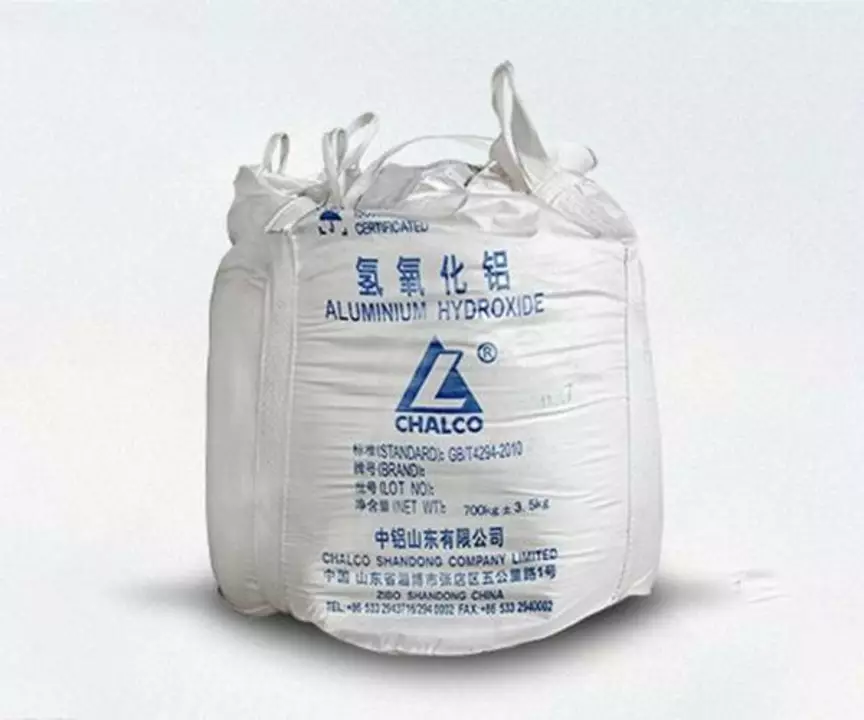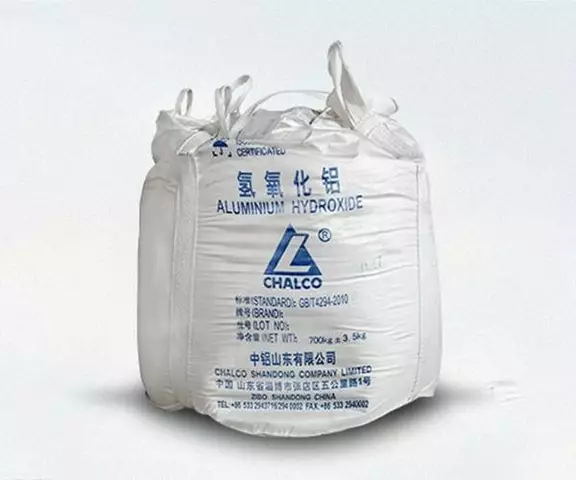The use of aluminium hydroxide in the manufacturing of plastics
Introduction to Aluminium Hydroxide in Plastics Manufacturing
As a copywriter, I often come across various innovative materials and their applications in different industries. One such material that caught my attention is aluminium hydroxide, which has found significant use in the manufacturing of plastics. In this article, I will discuss the various aspects of aluminium hydroxide and its role in plastics production. Let's dive in and explore this fascinating topic in detail.
Understanding Aluminium Hydroxide and its Properties
Before we delve deeper into the use of aluminium hydroxide in plastics manufacturing, it's essential to understand what it is and its properties. Aluminium hydroxide, also known as alumina trihydrate or ATH, is a white crystalline powder derived from bauxite, an ore of aluminium. It is a non-toxic, non-hazardous, and environmentally friendly material. Some of its key properties include excellent thermal stability, low abrasiveness, and high moisture absorption capacity. These properties make it an ideal choice for various applications, including plastics manufacturing.
Role of Aluminium Hydroxide as a Flame Retardant
One of the primary reasons for using aluminium hydroxide in plastics manufacturing is its effectiveness as a flame retardant. When exposed to high temperatures, aluminium hydroxide undergoes endothermic decomposition and releases water vapor. This process helps to cool down the material, reducing the chances of ignition and slowing down the spread of flames. Additionally, the residue left after decomposition forms a protective barrier that further inhibits the propagation of fire. This makes aluminium hydroxide an essential component in the production of flame-retardant plastics.
Enhancing Mechanical Properties of Plastics with Aluminium Hydroxide
Apart from its flame-retardant properties, aluminium hydroxide also contributes to enhancing the mechanical properties of plastics. When added to plastic materials, it can improve their tensile strength, impact resistance, and dimensional stability. This results in stronger and more durable plastic products that can withstand the wear and tear of everyday use. Furthermore, the use of aluminium hydroxide as a filler material can also lower the overall cost of plastic production, making it an economically attractive option for manufacturers.
Aluminium Hydroxide in Environmentally Friendly Plastics
As concerns about the environmental impact of plastics grow, manufacturers are increasingly looking for ways to make their products more sustainable. Aluminium hydroxide plays a crucial role in this regard. Being a naturally occurring mineral, it is an eco-friendly alternative to synthetic flame retardants and filler materials. Moreover, its use in plastics can help reduce the overall carbon footprint by lowering the amount of energy required during the production process. This makes aluminium hydroxide an essential component in the development of environmentally friendly plastics.
Applications of Aluminium Hydroxide in Various Plastic Products
Thanks to its versatile properties, aluminium hydroxide finds applications in a wide range of plastic products. Some of the most common examples include electrical enclosures, automotive parts, construction materials, and consumer goods. In each of these applications, aluminium hydroxide not only imparts flame-retardant properties but also enhances the overall strength and durability of the products. This makes it an indispensable ingredient in the production of high-quality plastics.
Processing Techniques for Incorporating Aluminium Hydroxide in Plastics
There are various processing techniques for incorporating aluminium hydroxide into plastic materials. These include compounding, extrusion, and injection molding. In each of these processes, aluminium hydroxide is mixed with the plastic resin and other additives to form a homogeneous blend. This blend is then heated, molded, and cooled to create the final plastic product. The choice of processing technique depends on factors such as the type of plastic material, the desired properties, and the specific application of the product.
Challenges and Future Prospects of Aluminium Hydroxide in Plastics Manufacturing
Despite its numerous advantages, the use of aluminium hydroxide in plastics manufacturing also presents some challenges. For instance, its high moisture absorption capacity can lead to the formation of voids or defects in the final product. Additionally, the decomposition of aluminium hydroxide can release water vapor, which can cause dimensional changes in the plastic material. However, these challenges can be overcome through proper processing techniques and the use of suitable additives.
As the demand for sustainable and high-performance plastics continues to grow, the use of aluminium hydroxide in plastics manufacturing is expected to increase. Its unique properties and eco-friendly nature make it an ideal material for developing innovative plastic products that meet the needs of today's consumers and help protect our environment for future generations.









I never realized how much aluminum hydroxide does for plastics. It's kind of amazing how something so simple can make such a big difference in safety and durability.
Thanks for breaking this down.
The term 'alumina trihydrate' is used incorrectly here. It's not alumina trihydrate-it's aluminum hydroxide. Alumina is Al2O3. This is a basic chemical error that undermines the credibility of the entire article.
This is 🔥! Seriously, I had no idea ATH was doing all this. Flame retardant + eco-friendly + cheap? Count me in. 🙌 Now I wanna know what brands are using it in their products.
omg this is so cool!! i love learning about stuff like this. like who knew a white powder could make your phone case not turn into a fireball?? 🤯 so many things we use every day are thanks to stuff like this. thanks for sharing!!
So… you wrote a 1000-word essay on a filler material? Bro. I just wanted to know if my couch is gonna catch on fire. You lost me at 'endothermic decomposition'.
I appreciate the focus on sustainability. It’s easy to overlook how materials like this contribute to safer, greener manufacturing. Small details like this matter more than we think.
Aluminum hydroxide is used extensively in the EU for cable insulation and automotive interiors-especially in EVs. The water release mechanism is critical for thermal runaway prevention. The data here is sound, though slightly oversimplified.
In India, we’re seeing a big push for ATH in low-cost construction materials. Fire safety is a huge issue in densely packed housing. This stuff is a game-changer for rural electrification and safe wiring. 🙏
I’ve been working in polymer R&D for over 15 years and I can tell you that the real challenge isn’t just the decomposition temperature or the moisture absorption-it’s the particle size distribution and surface treatment. If you don’t use silane coupling agents or surface-modified ATH, you end up with weak interfacial bonding, which leads to poor mechanical performance and premature failure under stress. Most consumer-grade products don’t even bother with this level of optimization, which is why you see so many brittle, low-end plastics on the market. The industry knows this, but cost cuts always win. Sad, but true.
This is actually really useful. I didn’t know ATH was used in so many everyday items. Makes me wonder what else we’re using without realizing it.
Ah yes, the classic 'greenwashing with mineral dust' strategy. Let's call it 'eco-friendly' because it's not chlorine-based, but ignore that mining bauxite destroys entire ecosystems and uses more water than a small country. Bravo.
The scientific accuracy of this article is commendable, though the tone leans toward promotional copy rather than technical exposition. That said, the inclusion of endothermic decomposition as a primary flame-retardant mechanism is correctly described and aligns with ASTM E84 standards. A well-researched piece, albeit lacking citations.
WAIT-so you’re telling me my kid’s toy car isn’t gonna explode in the sun because of some white powder?? I’m telling my wife we need to buy ALL the plastic toys now!! 🚨💥 I’m gonna start a petition to make ATH mandatory in ALL plastic products!!
i read this and thought abt my uncle who works in a plastic factory in hyderabad. he said they switched to ath last year and the fire drills stopped. not sure if its true but sounds legit. 🤔
There’s a deeper philosophical layer here, isn’t there? Aluminum hydroxide-derived from the earth, refined through human ingenuity, repurposed to prevent destruction. It’s a metaphor for resilience, isn’t it? We take something inert, something ancient, and we transform it into a shield against chaos. We are, in essence, alchemists of safety. And yet, we still burn the forests to get it. There’s irony in that. There’s tragedy. There’s beauty. And we don’t even notice.